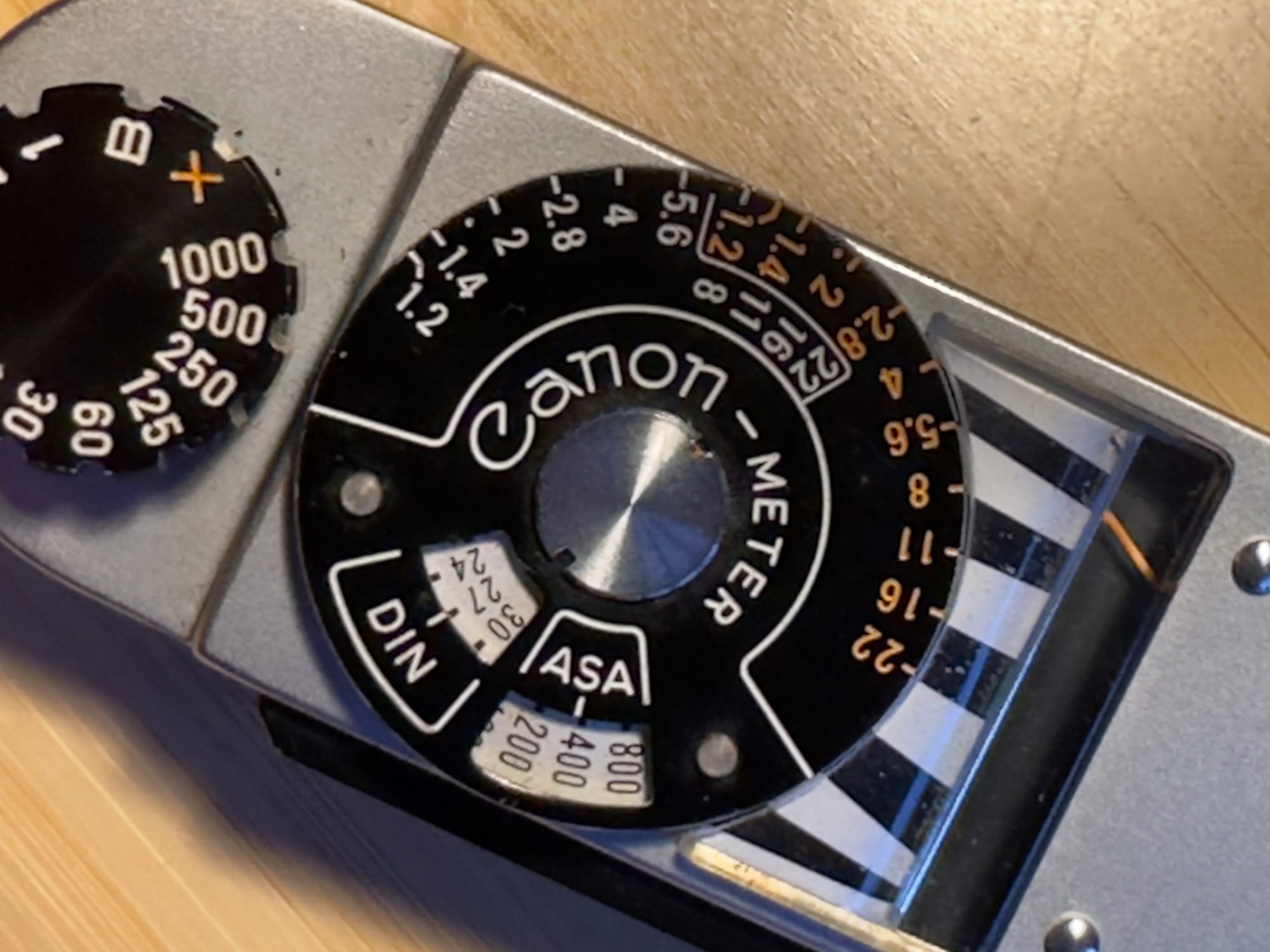Analog Basics: Film Speed, Box Speed, and Exposure Index
Do you wonder what box speed is? Confused by rating film? What even is an exposure index? Let’s get a grip on these concepts and get the most from our film.

Here’s something I wish I knew when I was starting in film—the meaning of terms like “box speed”, “exposure index”, and what “rating” a film means. I thought I’d offer a quick primer, especially because my app Crown + Flint relies heavily on these terms, and knowing what they mean will help you get the most out of the app—and your film!
Film Speed
Every film manufactured has a particular sensitivity to light. Some films need more light to get a good exposure, and some films perform with less light. This is called the “speed” of the film.
“Faster” films are films that are more sensitive, and hence require less light. Such films are often useful indoors, or even at night.
“Slower” films are films that are less sensitive, and hence require more light. Such films are often best outdoors, or with studio lights.
Film speed is measured in units defined by the International Organization for Standardization, also known as ISO. This is why you might sometimes hear film sensitivity referred to as ISO (although this is a bit like referring to units of distance as CGPMs instead of meters).
The bigger the number, the more sensitive the film (and hence the faster the film). Doubling the number represents a one-step increase in film sensitivity (where by “step”, I mean “stop”, if you know that term). Halving the number represents a one-step decrease in film sensitivity. For example, 400-speed film is one step slower than 800-speed film—it needs a bit more light to form a proper exposure. And 200-speed film is two steps slower than 800-speed film—it needs a fair amount of light to form a proper exposure.

(Your camera or light meter might not have an indicator for ISO—it might say ASA or DIN. Don’t worry: ASA speeds are the same as ISO speeds. And if your camera or light meter only has options for DIN, you’ll want a conversion table.)
Fast films are (generally speaking) those with a speed of 400 or higher. Slow films are those with a speed of 200 or lower. Not that this is in any way a universal definition, but it’s a handy rule of thumb.
Broadly speaking, the importance of knowing a film’s speed is for your light meter. Whether they are built into your camera, handheld, or an app (like Crown + Flint), all light meters need to know the speed of the film you are shooting to provide the correct camera settings. So it’s important you understand your film’s speed.
But how do you know your film’s speed? It can be a little confusing!
Box Speed
“Box speed” is simply the sensitivity rating as printed on the box of film. This number represents the manufacturer’s recommendation for how sensitive the film is (but see below). Here are some examples:

- Ilford HP5 plus has a box speed of 400.
- Ilford Delta 3200 has a box speed of 3200.
We know these numbers, because they are what’s printed on the box.
Some cameras can read what’s called the DX code that appears on some canisters of film—this code includes the box speed, so the camera can set up its own light meter for you automatically.
For the most part, you can’t go wrong using the box speed for your film. If in doubt, use the box speed.
But sometimes…sometimes the box speed is wrong. Or you have other reasons to want to use a different speed.
Exposure Index
The act of determining what speed to tell your light meter is called “rating” your film. Most of the time you will rate your film at the box speed. But sometimes you might rate it at a different speed. When you do this, the speed you select is called the “exposure index”, for reasons.
Why would you want to do this? As with everything that ISO does, it sets standards for how to determine the objective speed of a film. But very often film manufacturers will provide a box speed that is not in line with those standards. Sometimes, the result of applying the standard, while technically correct, produces aesthetically unpleasing results. Or sometimes the film will have quite a bit of flexibility and the manufacturer chooses a different value because the film can handle it.
For example, Ilford Delta 3200 is not a 3200-speed film. It is in fact a much slower film that behaves well when underexposed. Many photographers who use the film choose to rate it at 1000 instead.
Another example, Internet Lore has it that FOMA Fomapan 400 is not a true 400-speed film, and so some people choose to rate it at 320 or even 200 to increase the detail in the shadows.
Some films don’t even have a single box speed! Kodak Double-X 5222 film (which is intended for cinema purposes, but you can use it for stills to) claims a speed of 250 in the sun, and 200 under tungsten lighting.
And if you are going to push or pull film—a topic for another blog post—you must deliberately over- or underexpose the film, which means you need to rate it at an exposure index slower or faster than the box speed to achieve those results.
Putting it all together
For a light meter to tell you, accurately, how to set your camera to expose a scene well, your light meter needs to know how sensitive your film is to light. A film’s speed is a number that doubles with each step of increased sensitivity, and halves for each step of decreased sensitivity—400-speed film is one step more sensitive than 200-speed film. And 100-speed film is one step less sensitive than 200-speed film.
A film’s box speed is the speed the manufacturer suggests you use—and is printed on the box. If you want to deliberately underexpose (maybe because you plan to push it in development) or overexpose (maybe to get more shadow detail) you can rate it to a different exposure index than the box speed.
I certainly wish I better understood these terms when I started my analog journey. If you found this primer helpful, let me know in the comments!
Support this blog
If you enjoy reading this blog, I encourage you to consider purchasing a book or print to show your support. And if you're into analog photography, check out my new mobile app Crown + Flint.

